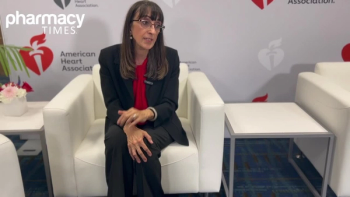
Lutetium-177 PSMA-617 Plus ADT and ARPI Improves Progression-Free Survival in PSMAddition Trial
New research highlights the benefits of combining lutetium PSMA 617 with standard treatments, showing improved outcomes for prostate cancer patients.
The phase 3 PSMAddition trial evaluated the addition of lutetium-177 PSMA-617 (Pluvicto) to standard androgen deprivation therapy (ADT) plus androgen receptor pathway inhibitor (ARPI) regimens in patients with metastatic hormone-sensitive prostate cancer (mHSPC). Results demonstrated a 28% improvement in radiographic progression-free survival, exceeding the study’s efficacy threshold, with secondary endpoints—including PSA responses and RECIST outcomes—also favoring the lutetium arm.
Although overall survival data are still maturing, the combination shows early promise for improving outcomes when introduced earlier in the disease course. In this interview, Scott Tagawa, MD, discusses the trial results, their mechanistic rationale, and the potential for radioligand therapy to move into earlier treatment settings.
Q: Could you summarize the key efficacy outcomes from the PSMAddition trial, particularly progression-free survival and overall survival, and how these results compare with standard ADT + ARPI regimens alone?
Scott Tagawa, MD: The PSMAddition study added lutetium-177 PSMA-617 to a strong standard backbone of ADT with an ARPI of physician’s choice. Five different ARPIs were utilized—one of which is specific to China, but the others are used globally. Lutetium-177 PSMA-617 was administered every 6 weeks for up to 6 cycles at the standard 7.4 GBq dose.
The primary end point was radiographic progression-free survival (rPFS), which improved by 28%. We aimed for a minimum improvement of 23.5%, so this exceeded expectations. Several other efficacy end points were also improved. Overall survival is not yet mature, but the initial trend favors early lutetium in terms of benefit.
However, the hazard ratio currently crosses 1.0 within the 95% confidence interval, and it may never reach statistical significance due to built-in crossover—about 60% of patients in the control arm who progressed crossed over to receive lutetium as part of the study, and additional patients received it outside the trial. Still, this would not be a negative outcome, as the drug already has proven overall survival benefit in later settings.
Other secondary end points, including PSA declines (to undetectable levels in some cases), RECIST responses, and time to skeletal-related events, all favored the lutetium arm. Overall, the efficacy package was favorable.
Q: How does adding Pluvicto earlier in the disease course (in mHSPC rather than mCRPC) potentially change the treatment paradigm for prostate cancer?
Tagawa: Scientifically, later heavily pretreated tumors are more likely to have lower PSMA expression. At diagnosis, most tumors express androgen receptor and many express PSMA, meaning there is more target earlier in the disease.
We also know that lutetium-177 is a low-energy beta emitter, making it more susceptible to radioresistance, which is more likely to develop in later stages. So scientifically, it makes sense to move it up front.
Clinically, this has broad implications. There are far more patients with earlier-stage disease, but not as many authorized users to deliver the therapy. We need to increase communication and expand the number of centers equipped for administration. Many of these patients are managed by urologists or medical oncologists, neither of whom can typically administer radioligand therapy, so multidisciplinary coordination is essential.
Currently, we have 4 main types of triplet regimens. ADT plus ARPI is the backbone for almost everyone, and docetaxel has been historically added, though its benefit in that combination remains unclear. Other triplet strategies are emerging, including PARP inhibitors like niraparib and others under study, as well as AKT inhibition in PTEN-selected populations.
The key implication is that for appropriately selected patients—based on clinical and biomarker criteria—triplet therapy may provide greater up-front benefit, reduce disease burden, and help maintain both overall survival and quality of life.
Q: From a mechanistic and pharmacologic standpoint, what synergistic rationale supports combining radioligand therapy with androgen receptor pathway inhibition?
Tagawa: Any form of radiation may perform better when combined with AR pathway inhibition, as preclinical studies have shown. Hormone therapy and radiation often synergize.
For PSMA-targeted radioligand therapy, specifically, there’s evidence that hormonal therapy can upregulate PSMA expression, temporarily increasing the amount of target available. This creates a dual scientific rationale: hormonal therapy can both sensitize tumors to radiation and increase PSMA expression, potentially enhancing the efficacy of the radioligand payload.
Newsletter
Stay informed on drug updates, treatment guidelines, and pharmacy practice trends—subscribe to Pharmacy Times for weekly clinical insights.






















































































































































































































